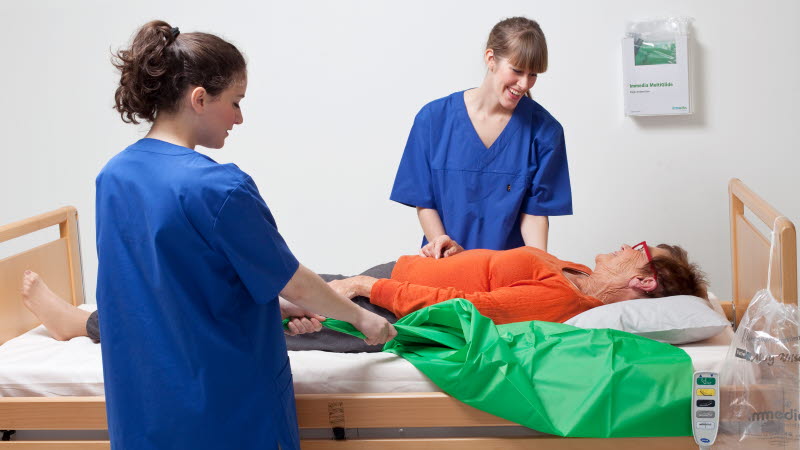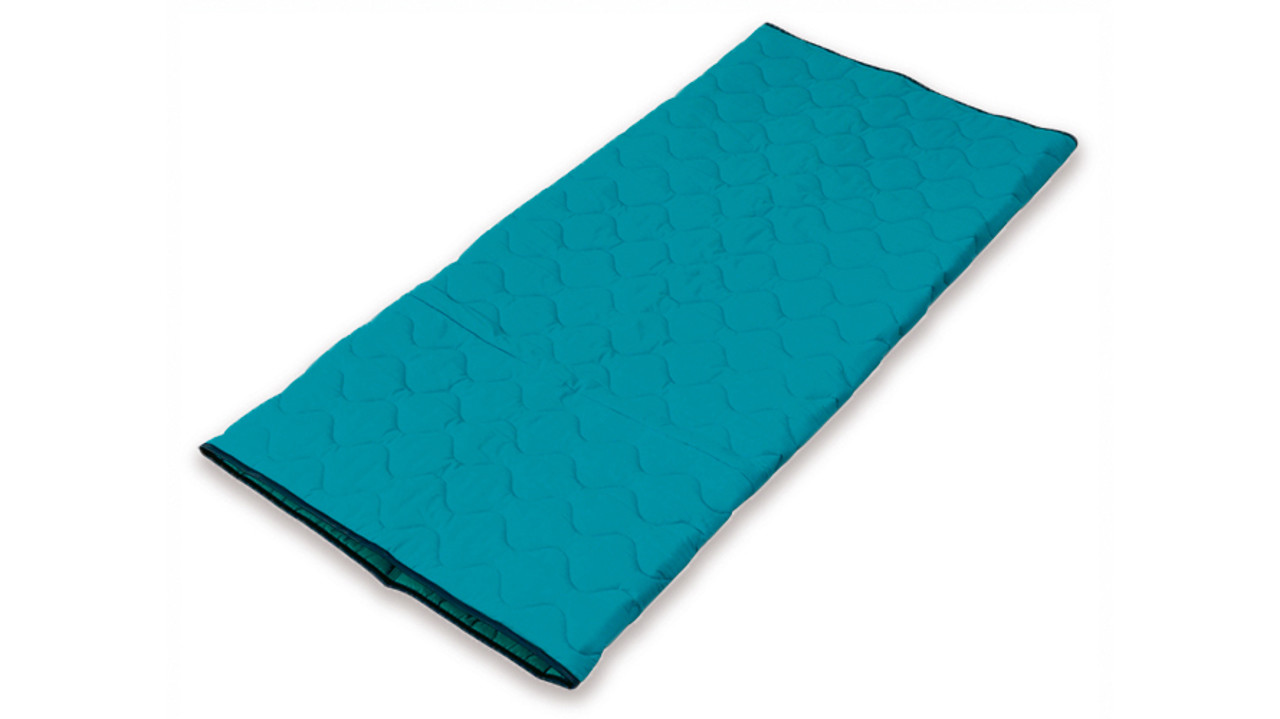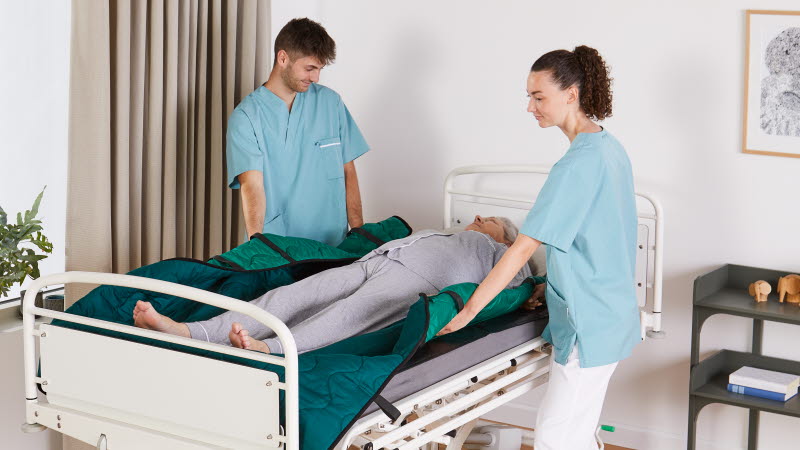There is a broad agreement among studies that physical demands are lower when using a friction-reducing device than when using a traditional cotton draw sheet to reposition a patient. Recent data from the global risk consulting company AON suggest that nearly twice as many healthcare workers are injured when repositioning patients compared to transferring patients between beds or chairs. These activities include repositioning patients in bed (boosting), laterally repositioning, and turning (Wiggermann, 2021).
When patients’ impairments are severe, they may require substantial, sometimes total, assistance from caregivers. Such assistance can be stressful to those providing it and put them at considerable risk for injury. The fact that positioning horizontal devices is associated with reduced pull forces is beyond contention (Omura, 2019; Weiner, 2016; Wiggermann, 2021; Bohannon, 1999). Several studies support this conclusion and suggest that using a sliding sheet can substantially reduce caregiver burden when repositioning patients (Omura, 2019; Baptiste-NcKinney, 2018; Garg, 2012).

Immedia MultiGlide & MultiGlide SPU
A study investigated the peak force needed in boosting and found that it was on average, 38.1% less with slide film compared to regular sheet, and the impulse of force was, on average, 40.6% less (Muona, 2022). After 3 and 6 months of sliding sheet usage, pain both in the neck and lower back and disability due to musculoskeletal disorders decreases significantly, according to another study. They found a significant preference for the friction-reducing sheet when comparing perceived shoulder, upper and lower back and whole-body exertion while repositioning a passive patient in bed (Weiner, 2016).

Immedia GlideCushion & TurningMattress
British regulations based on the European directive on manual handling of loads state that employers must reduce the risk of injury to employees where manual handling is unavoidable. The use of handling aids is given as one example of how this may be achieved.
A short, low-friction roller tested in a moderate-quality study was considered to reduce the effort required by most lead carers (75%), with the long roller next (68%). The researchers state that the results show that most handling devices are easy to position and reduce the effort required to effect a move on a bed, mainly using rollers (Pain, 1999).

Immedia 4WayGlide & TwinSheet4Glide
Studies found that using friction-reducing slide sheets produces less internal spinal loads than traditional cotton sheets. One study showed that when moving the patient towards the head of the bed, the compressive force in the L5–S1 joint is 6500 N, and while using small aids, the averaged peaks of force amounted to 2000–3000 N. Lower friction sheets similar to 4WayGlide and TwinSheet4Glide made repositioning patients easier as less force was needed. (Muona, 2022)
Turning devices improve ergonomics
A good-quality study finds that peak trunk and shoulder flexion angles were significantly different for patient turning devices during patient turning toward and away tasks. Turning devices showed significantly less muscle activity in the biceps, triceps, and left/right erector spinae than no assistive device. The results suggest that the patient tilting assistance embedded in patient turning devices can be an essential ergonomic consideration for reducing caregivers’ injury risks in the lower back and upper extremities (Hwang, 2020).
